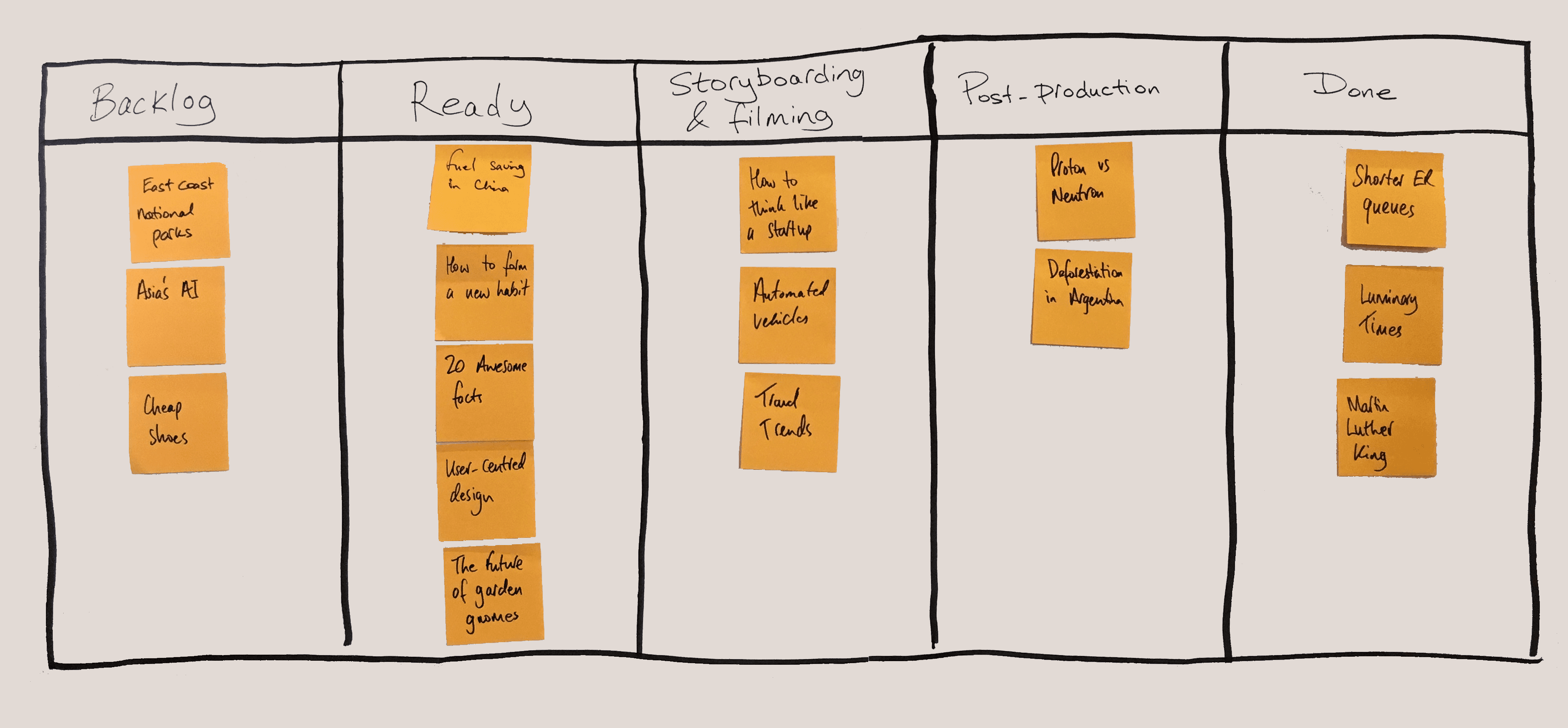What is this?

“It’s a Kanban board” is the most common answer.
It’s not.
It might be an “Agile Board” or a “Scrum Board”, but it’s not a Kanban board. Here’s why.
Although 看板 (Kanban) has multiple meanings in Japanese, what we (and the people who claim boards like the one above are Kanban boards) mean by Kanban is ‘The Kanban Method’. We mean Kanban as a method of managing knowledge work. We mean a pull system.
What is a pull system?
I read books using a pull system.
From experience I know that my brain has limited capacity to manage information coming into it from books. If I try to switch between two or more books at the same time, my brain gets confused and I start to mix up their content. Therefore, I have made a rule that I will only read one book at a time and my ‘to do’ list explicitly forbids me from reading more than one book.
I am currently reading The Inner Game of Tennis [which is a great book]. In my office, I have a stack of unread books that I have prioritised: the book at the top is the next book to read [it’s This is Service Design Doing]. I am allowed to reorder this stack of unread books, add new ones or remove books from the pile should I choose.
When I finish The Inner Game of Tennis, I can pick the book at the top of the pile and start reading it.
That is a pull system. I pull a new book from the pile only when I have the capacity to do so (i.e. when I finish the previous book).
On the other hand, if I was using a push system, I would permit the reading of any number of books at any one time.
So what about that board?
The board above is a visualisation of a system, but at no point does it limit the amount of work flowing though it. If they chose, the team who owns this board could start an additional 10 items. This means that it is a visualisation of a push system.
In my view, and the view of the guy who invented the Kanban Method [I was in the room when David Anderson said pretty much these words], you aren’t using Kanban unless you’re using a pull system.
So, in summary:
![]()
= a push system ≠ a pull system ≠ Kanban
Why are you on your soapbox about this?
I’m raising this because people seem to think that Kanban is just using a board like the one I’ve drawn above. Only the other day I heard a Waterfall team say they are “doing Kanban” because they have a board like the one above. It’s like saying that holding a daily stand-up is doing Scrum.
If you’d like to know more about Kanban, then visit our training pages for details on our upcoming public courses or contact us to discuss us running a bespoke private course.

nice post! do you using any tool for managing boards? I`m using Craft, and it`s just amazing. There is a toggle “Scrum/Kanban” view, so it fits me completely. check it https://craft.io/